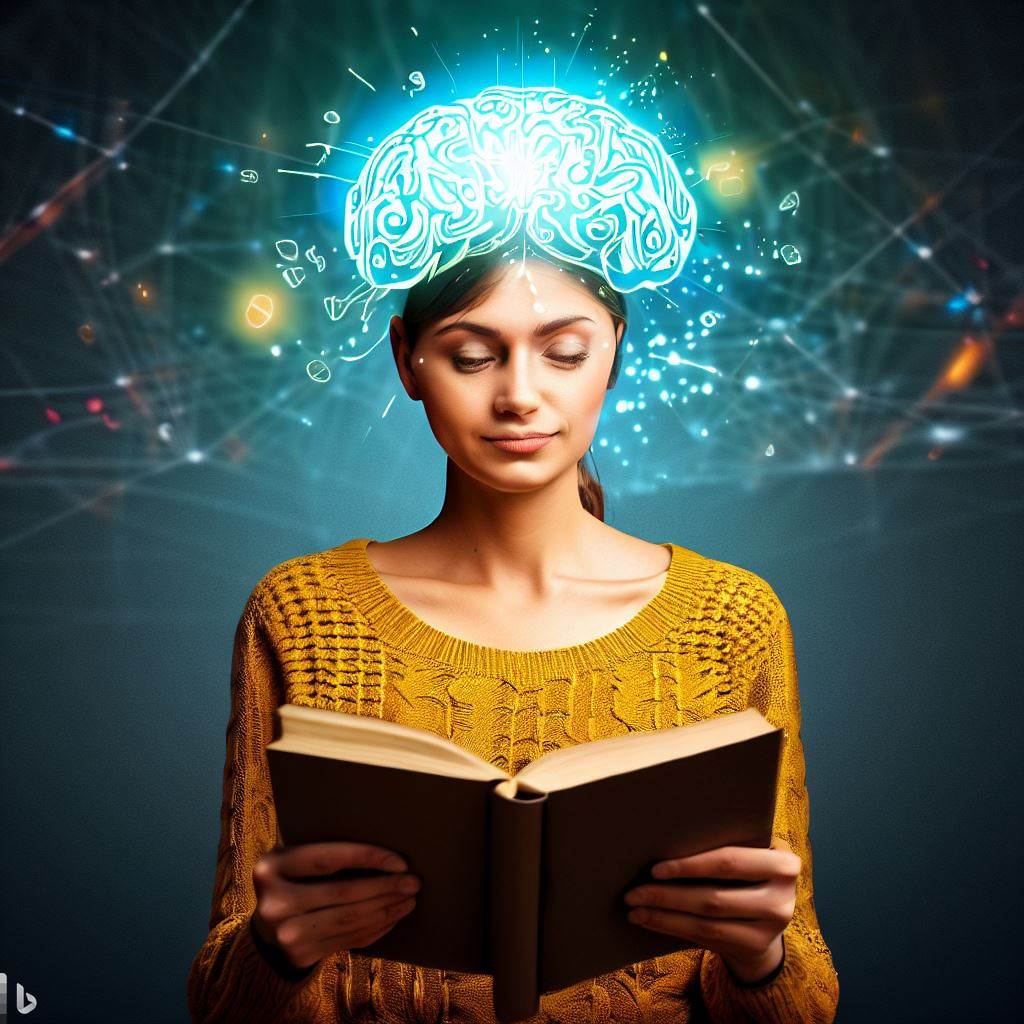
The human brain is a phenomenal engine of discovery, a repository for knowledge, and a marvel of evolution. When we read, this extraordinary organ is set into a beautifully orchestrated symphony of thought, emotion, and imagination. In this in-depth exploration, we’ll unveil the fascinating connection between reading and your brain.
1. The Neuroscience Behind Reading
First, let’s delve into the neuroscience behind reading. Reading involves multiple parts of the brain, each contributing to a different aspect of the reading process. The occipital lobe, for instance, processes visual cues, while the frontal lobe analyzes and interprets these cues. The parietal lobe, on the other hand, is involved in language comprehension.
2. The Brain’s Plasticity: How Reading Shapes Our Neural Pathways
The human brain is known for its remarkable plasticity – its ability to change and adapt. This plasticity extends to the way we read. Every time we read, we strengthen neural pathways and even create new ones, enhancing our cognitive abilities in ways that extend far beyond reading.
3. How Reading Enhances Memory
Reading doesn’t just provide us with new information; it also boosts memory and recall. When we read, our brains form new connections between concepts, making it easier to recall information later. In other words, reading is a powerful workout for your memory.
4. The Role of Reading in Emotional Intelligence
In addition to its cognitive benefits, reading plays a crucial role in our emotional intelligence. Reading, particularly fiction, enhances our understanding and empathy for others by allowing us to experience different perspectives and emotions.
5. Reading and Mental Health: A Symbiotic Relationship
Did you know that reading can have a positive impact on your mental health? Regular reading can reduce stress, increase feelings of relaxation, and even help manage symptoms of depression.
6. Reading for Lifelong Learning and Brain Health
Reading is a lifelong activity that continually challenges and stimulates the brain. Regular reading not only helps keep the mind sharp but can also delay cognitive decline in older adults, making it an essential habit for lifelong brain health.
7. The Impact of Digital Reading on the Brain
With the proliferation of digital devices, the way we read has fundamentally changed. But how does this shift impact our brains? While digital reading offers convenience, it may not provide the same depth of engagement and comprehension as traditional reading.
8. The Power of Reading: From Imagination to Creativity
Reading is a springboard for the imagination, enabling us to explore new worlds and ideas. This imaginative exercise also fuels our creativity, enhancing our ability to think outside the box and come up with innovative solutions.
9. Reading and the Brain: The Importance of Regular Engagement
Just as physical exercise keeps our bodies healthy, mental exercise – like reading – keeps our brains in shape. The more we engage our brains through reading, the more we strengthen our cognitive abilities and maintain brain health.
10. The Future of Reading and Neuroscience
As neuroscience continues to advance, we’ll undoubtedly discover more about the intricate relationship between reading and the brain. Such insights will not only enhance our understanding of the brain’s incredible complexity but also inform strategies for improving reading skills and promoting cognitive health.
11. The Societal Implications of Reading
Reading is not merely an individual activity. It also carries societal implications, shaping cultures and civilizations. Reading helps in the dissemination of knowledge and ideas, fostering communication and understanding between diverse groups. It’s a cornerstone for education and a vital tool in the fight against illiteracy and ignorance.
12. Reading and the Formation of Personal Identity
The books we read often shape our perceptions of the world and ourselves. In a way, our reading choices contribute to our personal identity formation. They help us explore different facets of our personality and understand our place in the world.
13. Reading as a Gateway to Multicultural Understanding
Reading is a powerful tool for promoting multicultural understanding. By exposing readers to diverse cultures, traditions, and perspectives, it helps to combat stereotypes and foster empathy. Thus, reading becomes a means to promote tolerance and global understanding.
14. The Therapeutic Potential of Reading
Beyond its cognitive benefits, reading can be a potent form of therapy. Bibliotherapy, the use of books as therapy, has shown promising results in managing mental health issues. Reading can offer a form of escapism, a refuge, and a source of comfort in challenging times.
15. Fostering a Love for Reading: A Gift for Life
Instilling a love for reading early in life can be one of the most valuable gifts. It opens doors to knowledge, sparks curiosity, and nurtures critical thinking skills. A love for reading not only boosts brain development but also fosters a lifelong habit that continues to enrich our lives.
16. Reading and Sleep: The Surprising Connection
Finally, let’s not overlook the often-underestimated relationship between reading and sleep. Reading (especially from physical books) before bedtime can promote better sleep quality. It helps us to unwind and prepare our minds for rest, contributing to overall well-being.
Conclusion
The connection between reading and the brain is profound and multifaceted, underscoring the immense benefits reading offers beyond mere entertainment. From enhancing cognitive function and emotional intelligence to promoting multicultural understanding and better sleep, reading is indeed a powerful tool for personal and societal growth. As we continue to explore this fascinating relationship, we can look forward to even more insights that underscore the importance of fostering a love for reading in all generations. Let’s celebrate the magic of reading and continue to harness its power for cognitive enrichment, emotional growth, and societal progress.